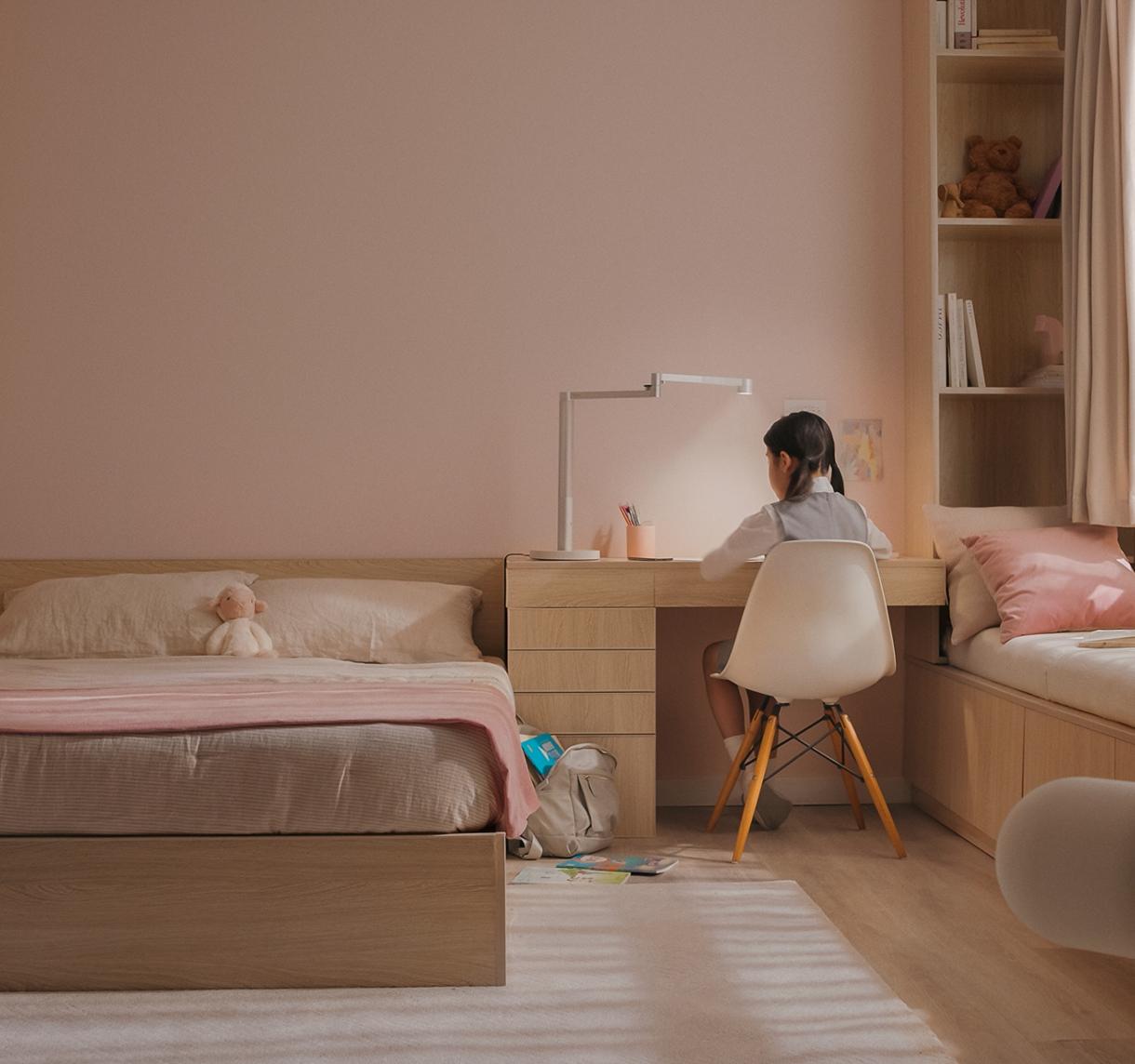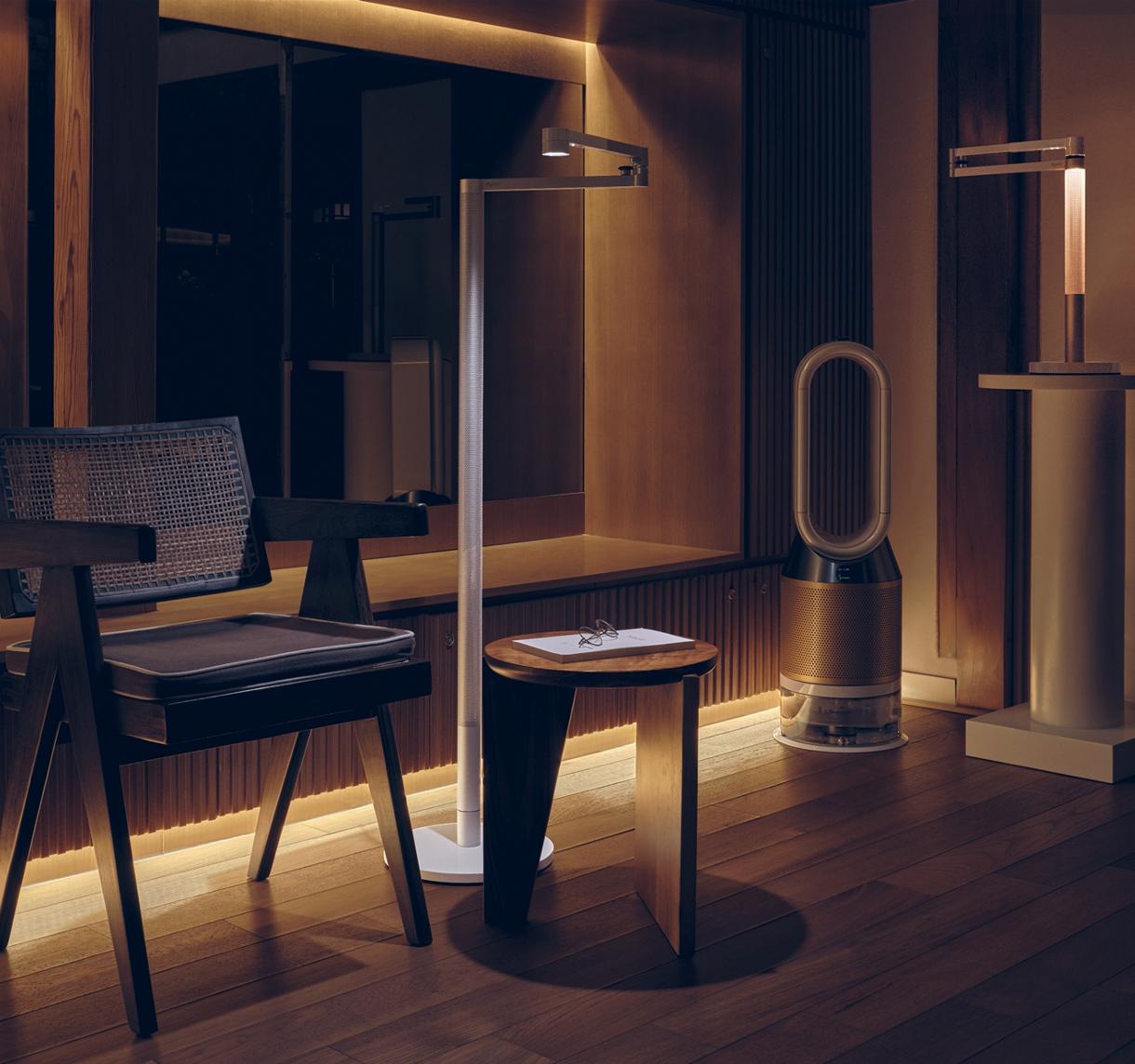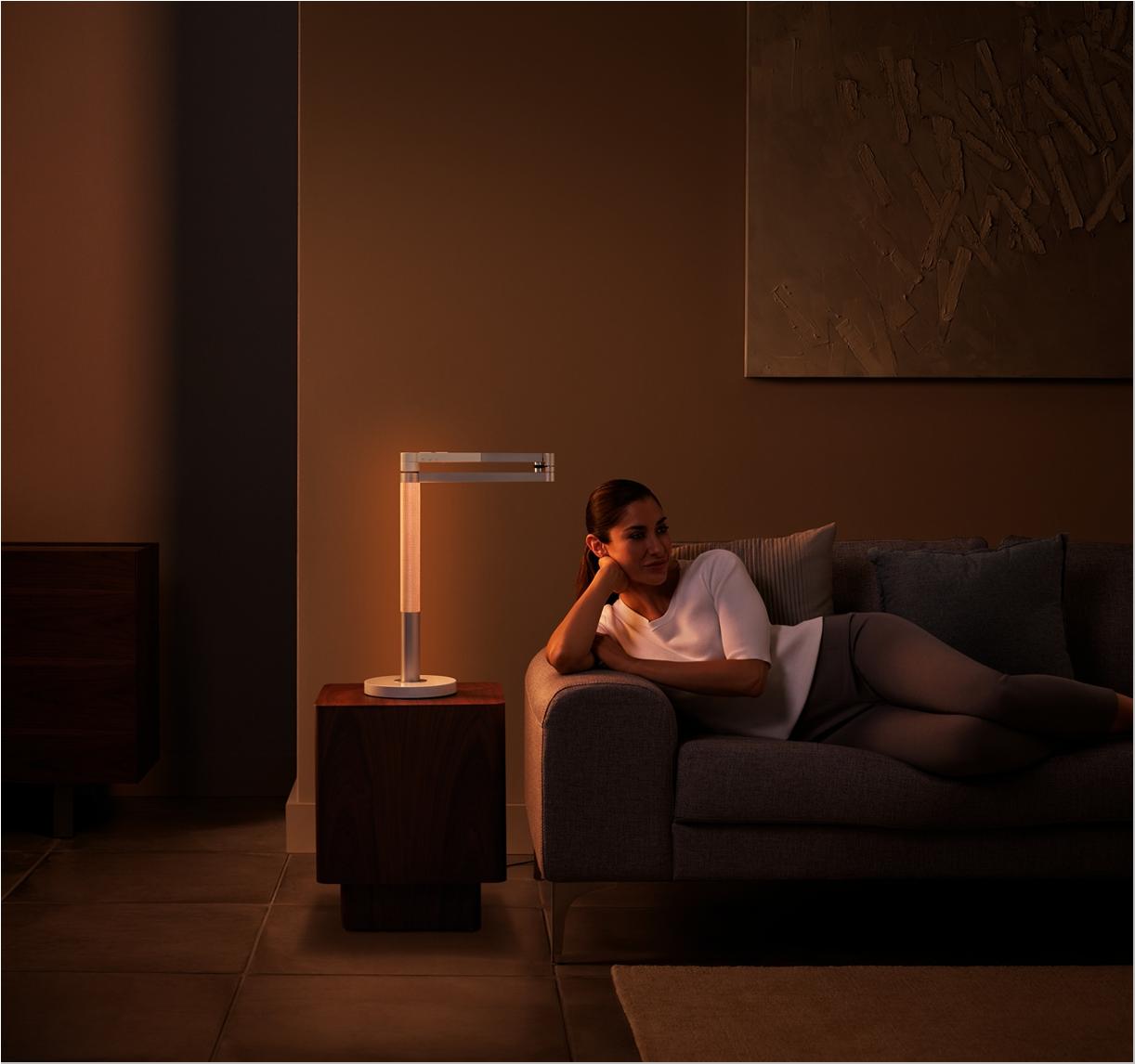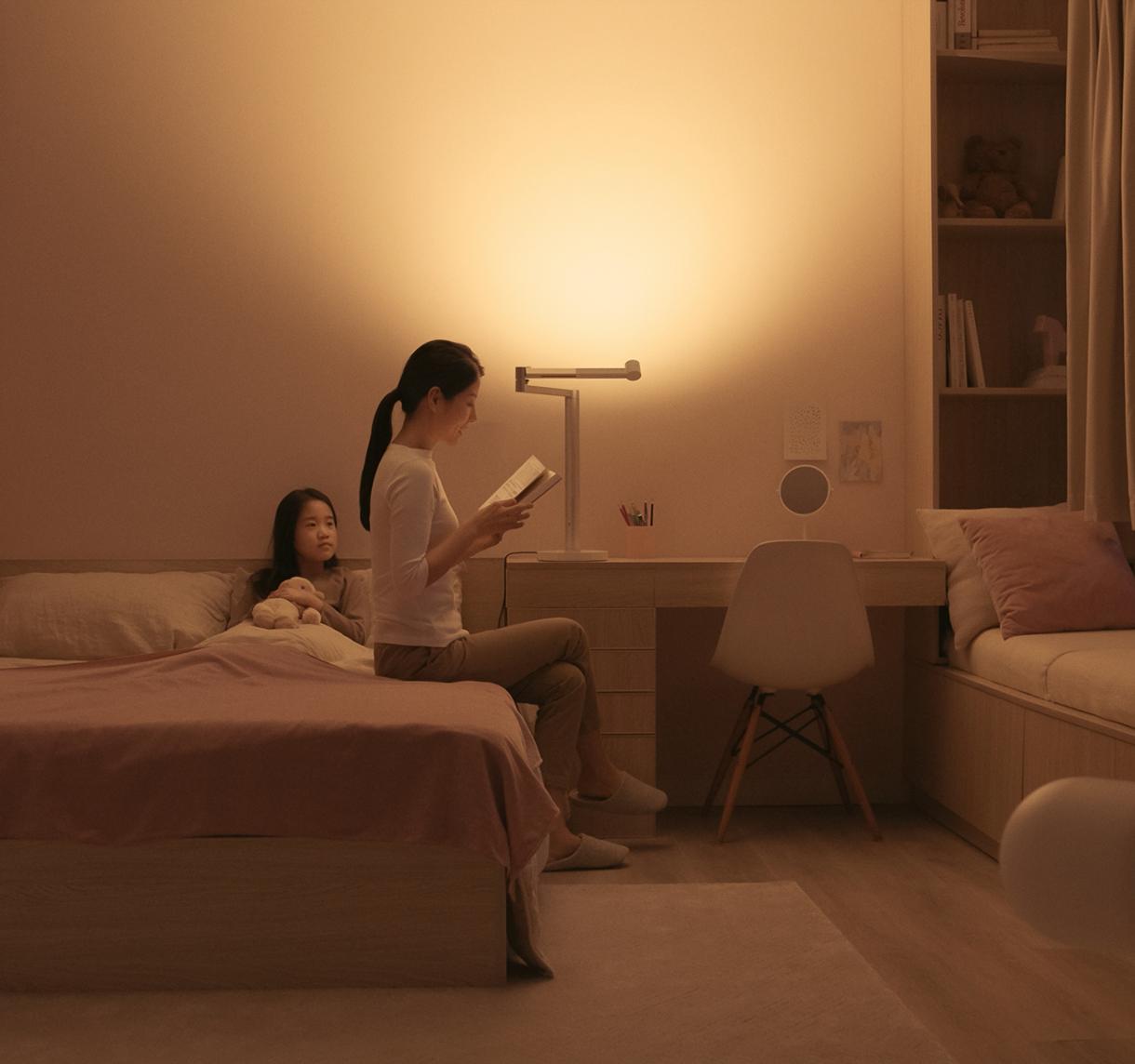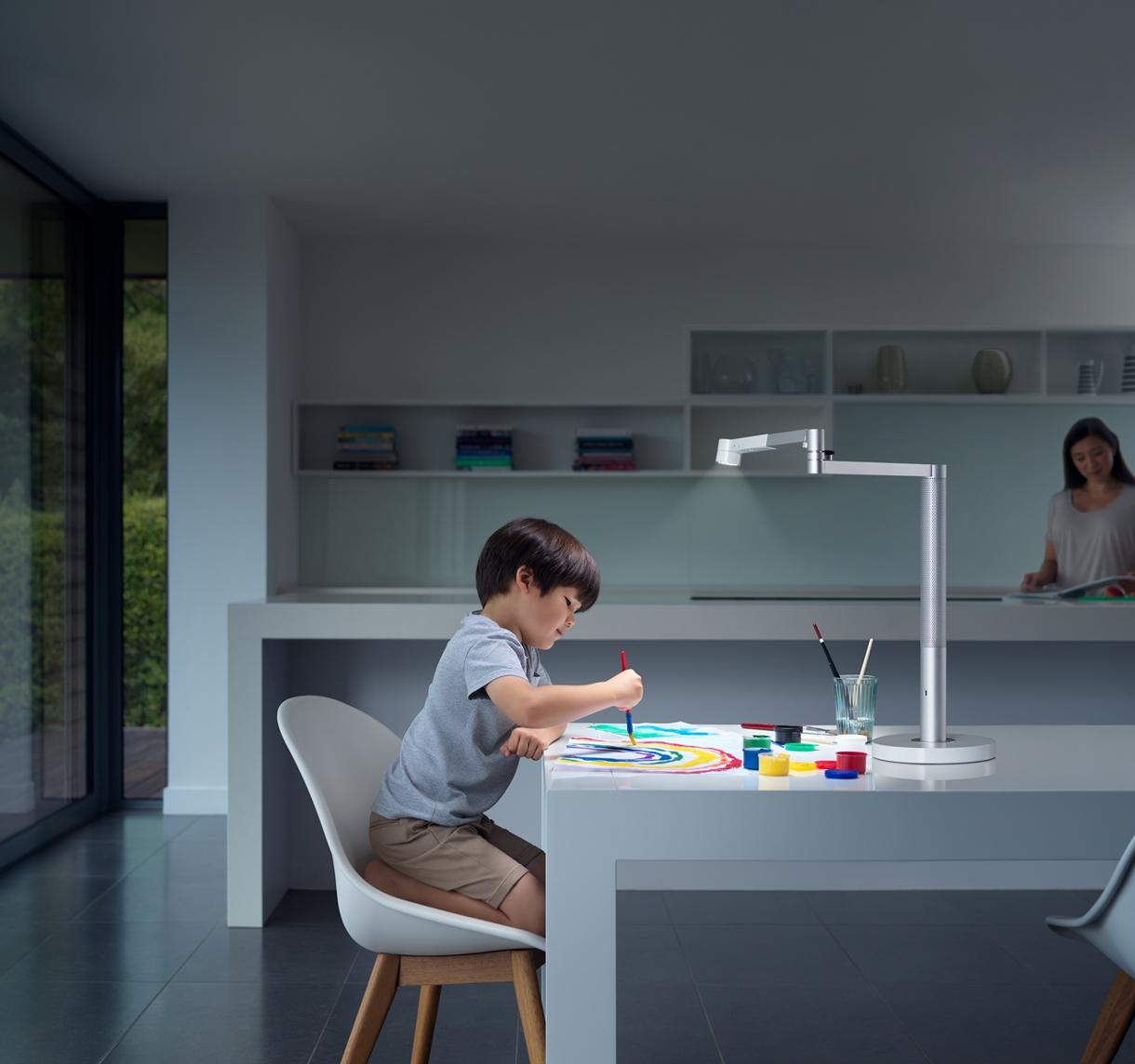HEALTHY HOMES AND WORKPLACES
Welcome to our Healthy Homes and Workplaces 10-part series. In these stories, we delve deep into the science and engineering behind our machines to reveal our Dyson top tips, tricks and recommendations for keeping your home and workplace clean and healthy though lockdowns and beyond. Find out more on Instagram through #DysonHealthyHome.


The right light
As winter arrives, Neuroscientist Dr Karen Dawe shares her advice for lighting your work or study-from-home space.
With winter drawing in and the clocks having gone back, the change in daylight hours can affect our sleep patterns. It is not often understood how this shift in our social clock, but not the sun clock, affects the way we feel and how our body functions.
Neuroscientist Dr Karen Dawe explains; “Our body clocks have evolved under the daily pattern of daylight. In fact almost all physiological functions from protein production and our metabolism to sleep patterns are under the control of the body clock.”
As the daylight hours get shorter and nights grow longer and more of us than ever work from home, Dr Karen Dawe reveals her tips on how to use light to create a productive working environment.
-
Create a designated space
Dr Karen Dawe: “Light plays an important role in signalling that a particular part of the room has a specific purpose. While building regulations make sure that office environments provide adequate levels of light, lighting in home offices is often overlooked.”
• Take control of the lighting around you. Play with various options until you find the ideal personalised setup.
• Consider how light falls around the entire room, not just directly around the light fitting.
• Be conscious of the position of lights. Natural light coming through windows or spotlights reflecting off a computer screen could cause glare and eye strain.
-

-
Choose the right light for your activity
Dr Karen Dawe: “Research shows that people tend to use their home lighting in four ways: indirect light for general illumination, task light for high-precision work, feature light to accent features like artwork, and ambient light. Although countless types of lighting fixtures are found in homes, each light typically only does one thing.”
• Think about the atmosphere you want to achieve for the room and precisely what you want to do in it.
• Ensure you still have the right level of light for your task - if you want a cosy dim light to read under, make sure it still delivers enough light so you don’t get eyestrain.
• For intricate tasks such as painting, drawing or applying makeup, consider an artificial light with a high colour rendering index.
-

-
Rest
Dr Karen Dawe: “We all want to stay focused when working from home, but it’s vital to give your eyes rest. Forcing the eye to concentrate on a small region for a prolonged period of time, by reading a book or using a computer screen, often fatigues the eye muscles leading to eye strain.”
• Adjust the brightness of your devices to provide a comfortable light. Adjust your text size if reading for prolonged periods.
• Look up from your screen and give your eyes a rest now and again.
-

-
Create a daylight routine
Dr Karen Dawe: Daylight is the gold standard when it comes to providing the right light for your tasks throughout the day. We have evolved to live and work under daylight’s changing brightness and colour temperature, regulated by cycles of day and night. This ultimately can impact how we feel and function.”
• Start your day with a walk outside. This burst of early morning daylight exposure will anchor your body clock to the pattern of local daylight – signalling that the day has begun.
• Consider interior lighting that gives you the ability to vary the light temperature (cool to warm light) and brightness for the time of day. Set up your working area near a window or in another naturally well-lit space.
• Start an evening routine of manipulating the light around you to create a relaxing environment – signalling to your body that the night is drawing in. -

-
Give your eyes the light they need
Dr Karen Dawe: “As we get older the muscles that control pupil size get weaker and let less light in, while the lens hardens. These changes mean that, according to the IES, people over 65 need four times the amount of light compared to someone who is under 25 years of age.
As well as weaking muscles, the lens of the eye gradually yellows which affects colour perception. This yellowing lens absorbs and scatters blue light, making it difficult to see differences in shades of blue, green and violet. Colours may seem duller, and contrasts between colours will be less noticeable.”
• Ensure you have bright enough lighting as your eyes age.
• Bulbs with a CRI above 80 may best help older eyes with colour definition.
-


